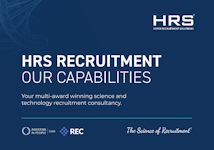
You've found a job that looks perfect for you. You're more than qualified, you've got plenty of relevant work experience, and the company seems like a great fit for your personality.
So you submit an application, and you pull out all the stops: polishing up your CV, crafting a really strong cover letter, and generally doing everything you can to prove that you're the right person for the role.
CV and Cover Letter Checklist
It's the job application to end all job applications, and as you click 'send', you feel more confident than you've ever felt before. You've nailed it. That job is yours.
But then...crickets. No response. A day goes by, then another, then another. Before you know it, a whole week has passed and you still haven't heard from your future employer.
How can this be? Don't they even want to INTERVIEW me? Did my application fail to impress? Has my dream job slipped through my fingers?
Woah there, chum. Don't give up hope just yet. Hiring managers tend to be very busy people, and it may just be that they haven't gotten around to you yet. Heck, some companies don't even have dedicated hiring managers - if you've applied for a job with a smaller organisation, your application may be in the hands of the managing director or another higher-up with umpteen other things on their plate.
Still, if you've been waiting for more than a week, it may not be inappropriate to chase up your job application with a polite follow-up email. Be careful, though: if you're too pushy about it, you'll jeopardise your chances of getting a favourable response.
If you're going to send a job application follow-up email, be sure to bear these tips in mind...
[more]
Wait at least a week before sending a follow-up email.
Following up immediately after you've submitted your application will make your potential employer think that you're impatient and entitled - neither of which are positive qualities.
Again, you must remember that the person in charge of hiring new workers may be very busy, and depending on the type of vacancy in question, they may have received a hundred or more applications besides yours. Give them at least a week - maybe even two - before you start drafting that follow-up email.
Make it clear who you are and which job you applied for.
Since you're probably just one name on a list of dozens, your email should mention the following information up front:
- Your full name
- The title of the job you're interested in
- When you submitted your application
Ensure your email's subject line is nice and unambiguous, too. Something like RE: Alex Anderson - Lab Assistant Job Application will make it obvious what the email is about before the recipient has even opened it.
Watch your tone - be polite and professional, not pushy.
Tone makes all the difference when sending an email like this. Even a brief email can have an enormous impact on what your potential employer thinks of you. Consider this message:
Hi - I applied for this job over a week ago, please tell me when I can expect to hear from you.
Now, compare that with the following:
Hi - I recently applied for the above position via your website. I just wanted to touch base and ask what stage of the hiring process you've reached.
Worlds apart, no? You want the hiring manager to see you as a patient, well-mannered professional with superb communication skills, so make sure that's the image you're projecting in your email.
Keep it short.
Without wishing to sound like a broken record, hiring managers are busy people, and whoever you're emailing probably won't have the time or any desire to read an essay from you.
So stick to the key points:
- Who you are
- Which job you applied for, and when
- Why you're emailing (i.e. to check whether they received your application)
- Why you're right for the job (one or two sentences only)
Reaffirm your interest in the position.
Here's a good reason to chase your job application with a follow-up email: it reinforces to the employer that you genuinely want to work with them. Without waffling on too much - see previous tip - you should take this opportunity to restate your interest in the job and quickly highlight the key strengths that you discussed in greater detail in your cover letter.
Speaking of which...
Include your CV, cover letter and contact details.
Don't make the hiring manager go digging back through all the applications they've received to find out who you are. For convenience's sake, you should attach your CV and cover letter to your follow-up email (even if you've already provided these documents) and include your phone number along with your email address.
This will make it easy for the recipient of your email to get in touch with you if necessary.
Proofread before sending!
One final thing: you should proofread your follow-up email just as thoroughly as you checked your initial application. You don't want to make yourself look silly with a daft typo or sloppy grammatical error!
READ MORE: Why Didn't I Get the Job?
Don't miss our latest news and insights - follow HRS on Twitter or LinkedIn!
Photo from Pexels.com
